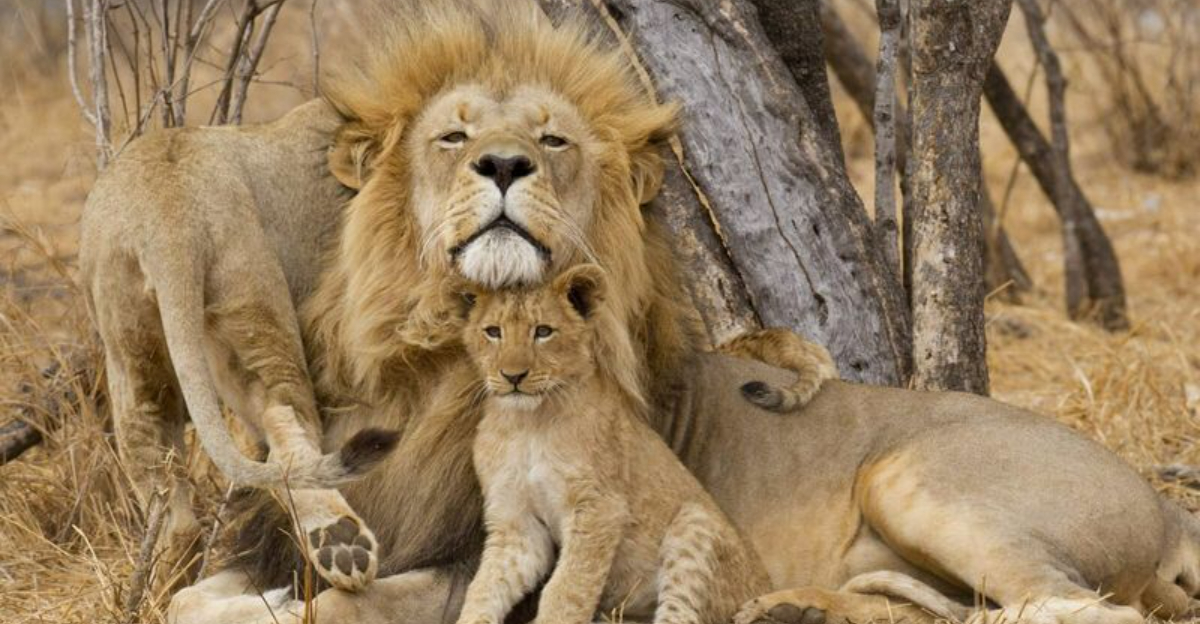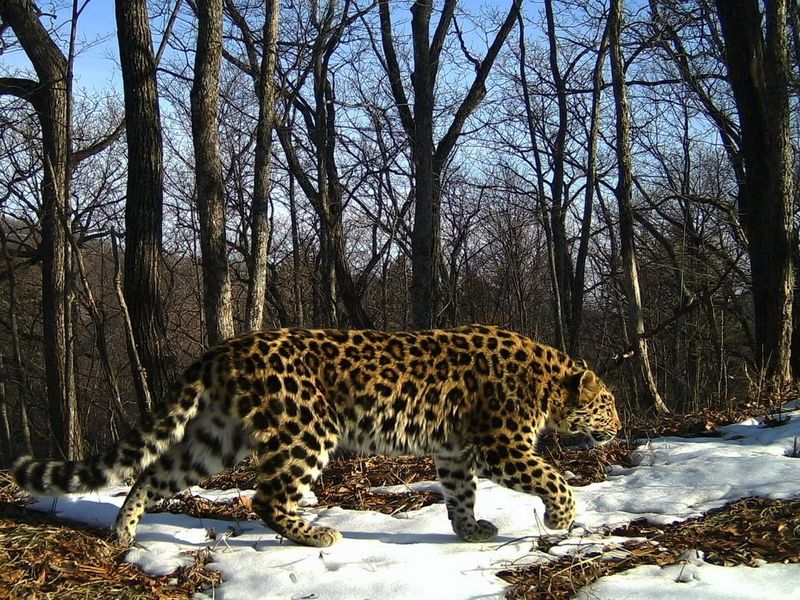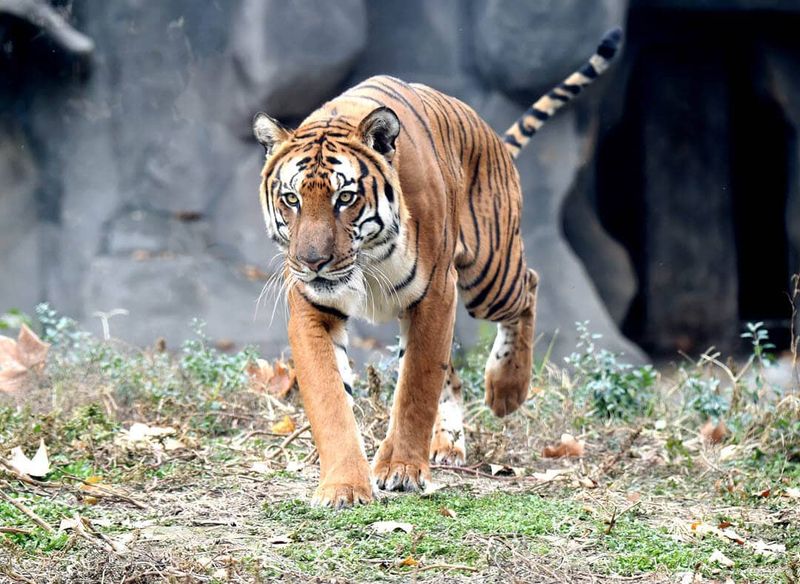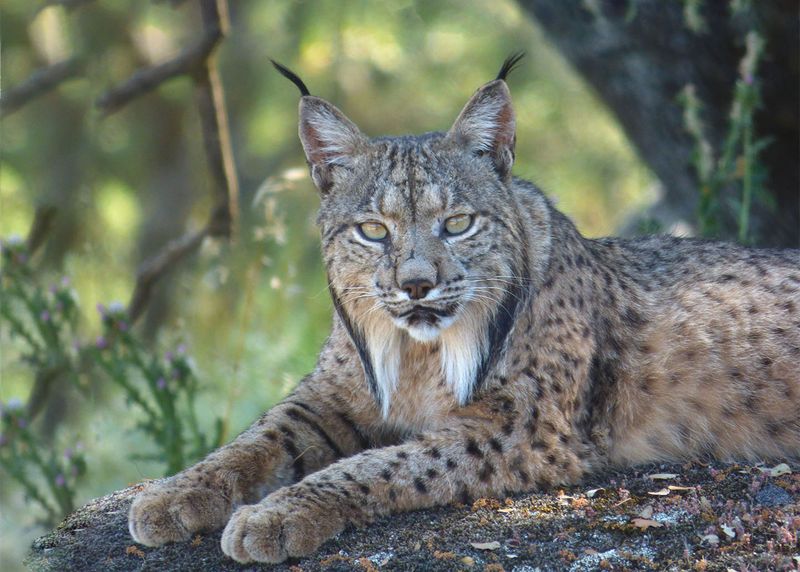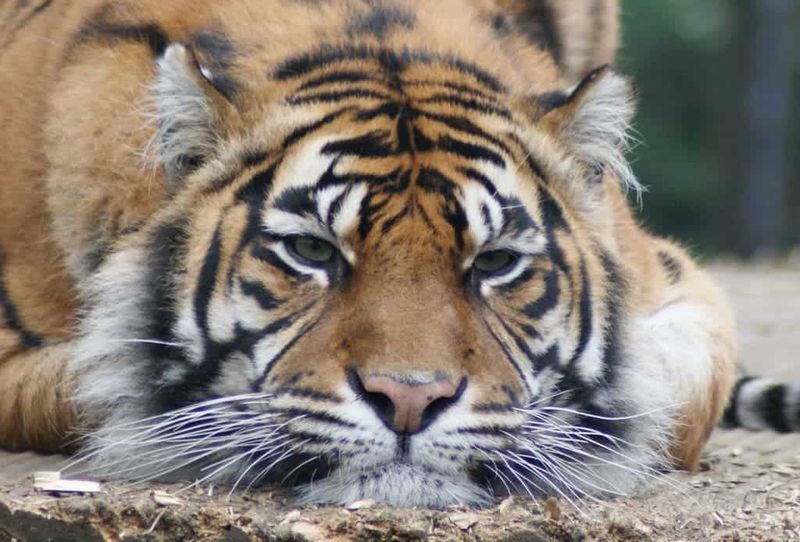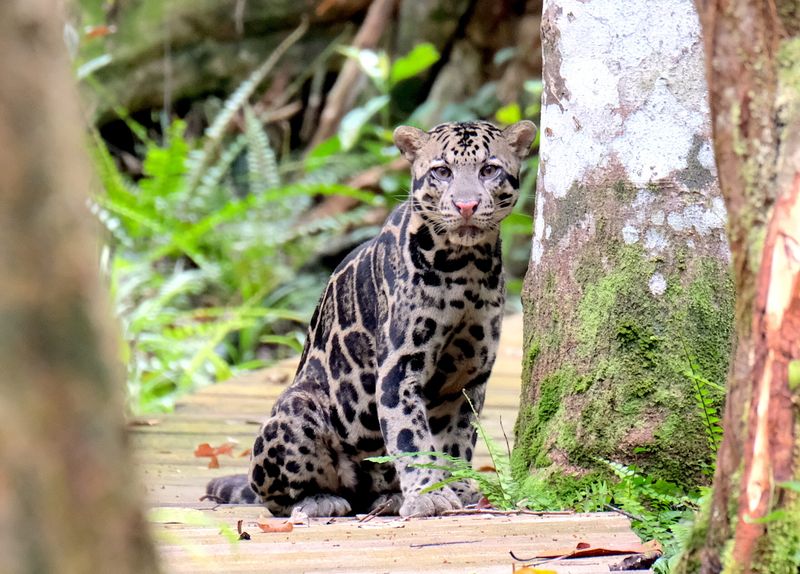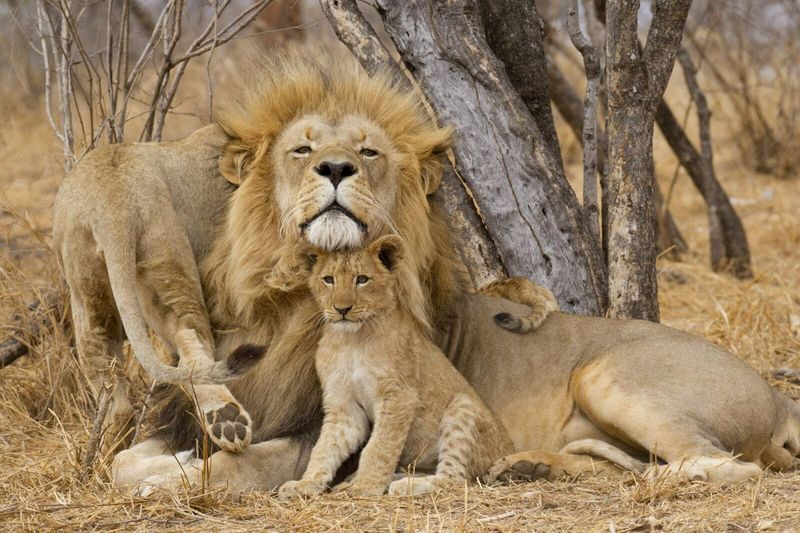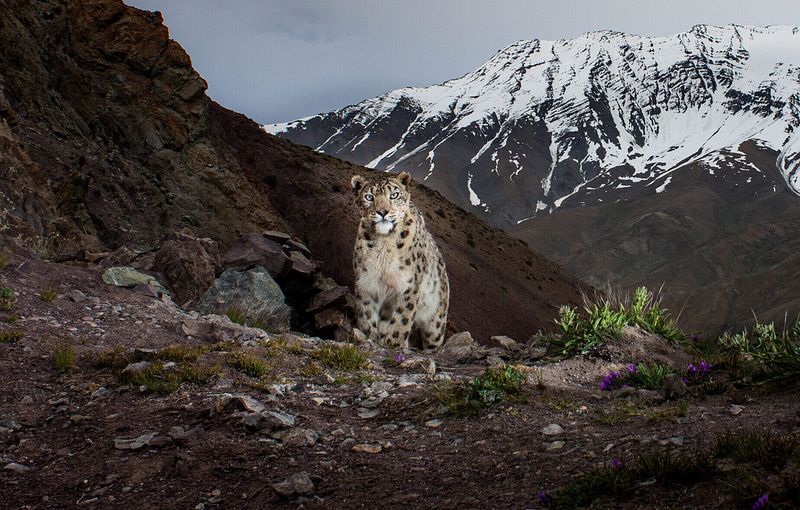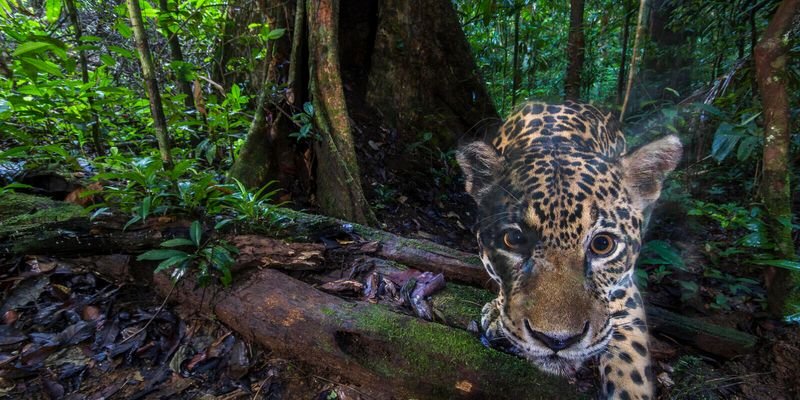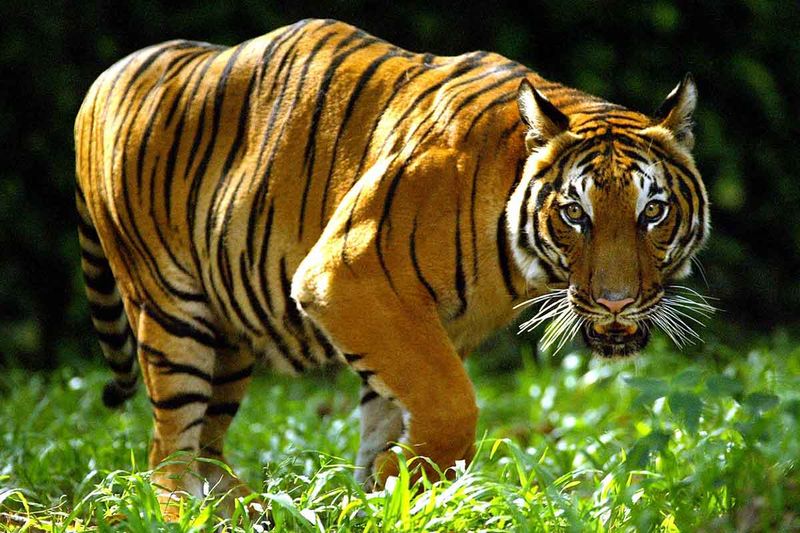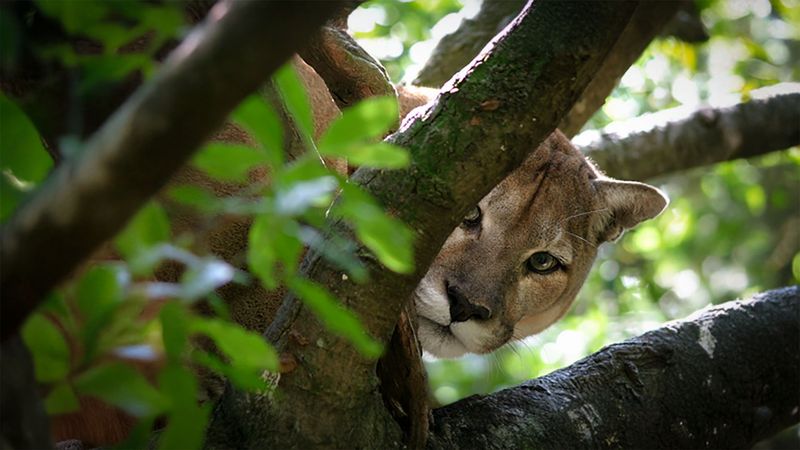📖 Table of Content:
Big cats around the world are facing unprecedented threats due to rapid habitat loss caused by human activities. This has led to dwindling populations and isolated communities of these majestic creatures. From the dense forests of Russia to the scrublands of Spain, these big cats are struggling to survive as their natural environments disappear. Conservation efforts are more critical than ever to preserve these species and their ecosystems.
1. Amur Leopard
The Amur leopard, with fewer than 100 individuals in the wild, is critically endangered. A solitary hunter native to the temperate forests of Russia and China, this majestic cat has lost over 80% of its habitat due to logging and development. Its striking spotted coat blends seamlessly with the forest shadows, yet human encroachment has left it vulnerable. Conservationists are racing against time to protect the remaining habitat and prevent further decline. Efforts include anti-poaching measures and habitat restoration, aiming to secure a future for this elusive predator.
2. South China Tiger
Possibly extinct in the wild, the South China tiger hasn’t been reliably spotted for over 20 years. Massive deforestation across central and eastern China has eradicated much of their natural habitat. These vibrant striped felines once roamed vast forests but now face an uncertain future. Efforts to reintroduce captive-bred tigers are being explored, but the challenge remains daunting. Habitat restoration and stringent protection laws are essential to any revival strategy. The world watches as conservationists work tirelessly to bring this iconic species back from the brink.
3. Iberian Lynx
With tufted ears and a bobbed tail, the Iberian lynx clings to existence in isolated pockets of Spain and Portugal. Agricultural expansion and infrastructure development have reduced its Mediterranean scrubland habitat by more than 80%. This stealthy feline once thrived, but now it faces new threats every day. Conservationists have implemented breeding programs to boost population numbers, while land preservation efforts aim to expand their natural environment. The survival of the world’s most endangered cat depends on continuous support and awareness.
4. Sumatran Tiger
Sumatran tigers, with fewer than 400 individuals left, are struggling for space on this Indonesian island. Palm oil plantations have replaced vast stretches of their territory, and rapid deforestation continues unabated. These tigers are renowned for their strength and striking stripes, making them an iconic symbol of their native land. Conservationists are fighting hard to protect the remaining forests and implement sustainable agricultural practices. Through habitat corridors and anti-poaching patrols, there’s hope to stabilize their numbers and ensure their survival in the wild.
5. Borneo Clouded Leopard
The Borneo clouded leopard, mysterious and rarely seen, faces a shrinking island home. Logging operations and palm oil plantations transform ancient rainforests, leaving these elusive cats in fragmented habitats. Their unique cloud-like spots allow them to blend into the forest canopy, but isolation threatens their survival. Conservation groups are working to connect forest fragments and protect critical areas. By fostering community engagement and sustainable land-use practices, there’s hope to preserve the enchantment of Borneo’s rainforests and its clouded leopards.
6. African Lion
The African lion, known for its majestic mane and regal presence, is losing its savanna habitat to urban expansion and agriculture. Once roaming vast territories, lion populations are now confined to scattered reserves. These kings of the jungle face new threats from human-wildlife conflicts and shrinking prey availability. Conservation efforts focus on habitat preservation and community-based initiatives. By promoting coexistence and sustainable practices, there is hope to secure their legacy and maintain the ecological balance of the savanna.
7. Snow Leopard
Snow leopards, elusive inhabitants of Central Asia’s rocky mountains, face habitat fragmentation due to climate change and human encroachment. Their thick fur and piercing eyes are adapted to the harsh environments, yet these solitary cats face declining prey and increased poaching. Efforts are underway to secure their territory through transboundary cooperation and local engagement. By raising awareness and promoting sustainable livelihoods, conservationists aim to protect the snow leopard’s delicate ecosystem and ensure its survival in the wild.
8. Jaguar
Apex predators of the Amazon rainforest, are facing rapid habitat degradation due to deforestation and mining. Their powerful build and distinctive rosettes make them masters of stealth and strength. As the rainforest canopy disappears, jaguars are losing vital hunting grounds and corridors. Conservation strategies are focusing on sustainable forestry and mining practices, as well as establishing protected areas. Through international cooperation and local engagement, there’s hope to preserve the rich biodiversity of the Amazon and secure the future of the jaguar.
9. Indochinese Tiger
The Indochinese tiger prowls the dense jungles of Southeast Asia, its vibrant coat a testament to its wild origins. Rapid deforestation for agriculture and infrastructure development has confined these tigers to isolated pockets. Known for their elusive nature, these tigers face dwindling prey and increased poaching pressures. Conservationists are working to re-establish habitat connectivity and strengthen anti-poaching measures. By fostering cross-border collaboration, there’s hope to revive the Indochinese tiger population and maintain the ecological integrity of their habitat.
10. Puma
Pumas, also known as cougars, roam the rugged terrains of the Americas, facing habitat loss due to urban sprawl and land conversion. These adaptable predators, with their sleek bodies and keen senses, are forced into smaller ranges. Human-puma conflicts are on the rise as they venture closer to populated areas. Conservation efforts focus on creating wildlife corridors and implementing coexistence strategies. By promoting awareness and understanding, there’s a path forward to ensure these stealthy hunters continue to thrive in their native landscapes.
